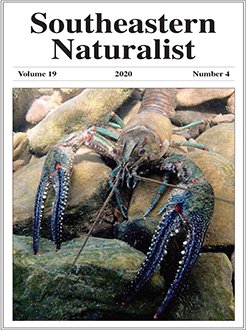Limnothlypis swainsonii (Swainson's Warbler) readily colonizes novel habitat formations that meet basic requirements for understory stem density and visual screening. Little is known about the warbler's behavioral response to naturalized populations of introduced plants. I surveyed the incidence of introduced invasive Ligustrum spp. (privet) and native Arundinaria spp. (cane) on breeding territories (n = 590) of Swainson's Warbler in the southeastern United States. Privet occurred frequently on territories in Mississippi (65.0%), Alabama (55.7%), Louisiana (52.8%), and Texas (39.5%). Territories with privet (49.6% of total) were observed in 90 counties and parishes. The survey revealed numerous instances of warbler territories located in near-monocultures of Ligustrum sinense (Chinese Privet). Territories with cane (33.1% of total) were observed in 72 counties and parishes. In a broader context, the survey data suggest that Swainson's Warbler populations have rapidly adapted to invasive privets, which are physiognomically similar to several native thicket-forming shrubs.
How to translate text using browser tools
4 November 2020
Incidence of Invasive Privet (Ligustrum spp.) on Swainson's Warbler Breeding Territories in the Gulf Coastal States
Gary R. Graves
ACCESS THE FULL ARTICLE

Southeastern Naturalist
Vol. 19 • No. 4
December 2020
Vol. 19 • No. 4
December 2020




